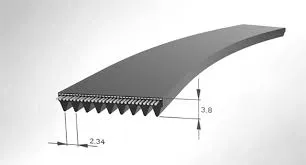- Arabic
- French
- Russian
- Spanish
- Portuguese
- Turkish
- Armenian
- English
- Albanian
- Amharic
- Azerbaijani
- Basque
- Belarusian
- Bengali
- Bosnian
- Bulgarian
- Catalan
- Cebuano
- Corsican
- Croatian
- Czech
- Danish
- Dutch
- Afrikaans
- Esperanto
- Estonian
- Finnish
- Frisian
- Galician
- Georgian
- German
- Greek
- Gujarati
- Haitian Creole
- hausa
- hawaiian
- Hebrew
- Hindi
- Miao
- Hungarian
- Icelandic
- igbo
- Indonesian
- irish
- Italian
- Japanese
- Javanese
- Kannada
- kazakh
- Khmer
- Rwandese
- Korean
- Kurdish
- Kyrgyz
- Lao
- Latin
- Latvian
- Lithuanian
- Luxembourgish
- Macedonian
- Malgashi
- Malay
- Malayalam
- Maltese
- Maori
- Marathi
- Mongolian
- Myanmar
- Nepali
- Norwegian
- Norwegian
- Occitan
- Pashto
- Persian
- Polish
- Punjabi
- Romanian
- Samoan
- Scottish Gaelic
- Serbian
- Sesotho
- Shona
- Sindhi
- Sinhala
- Slovak
- Slovenian
- Somali
- Sundanese
- Swahili
- Swedish
- Tagalog
- Tajik
- Tamil
- Tatar
- Telugu
- Thai
- Turkmen
- Ukrainian
- Urdu
- Uighur
- Uzbek
- Vietnamese
- Welsh
- Bantu
- Yiddish
- Yoruba
- Zulu
Oct . 08, 2024 08:19 Back to list
PK belt options for Renault vehicles and their specifications and features
The Importance of PK Belts for Renault Vehicles
When it comes to maintaining the performance and longevity of your Renault vehicle, one of the often-overlooked components is the PK belt. Also known as a serpentine belt or accessory belt, the PK belt plays a critical role in the functioning of various engine components, including the alternator, power steering pump, water pump, and air conditioning compressor. Understanding the significance of the PK belt can help Renault owners ensure their vehicles run smoothly and efficiently.
Function and Design
The PK belt is designed to be a single, continuous belt that wraps around multiple pulleys. This design allows it to drive several accessories simultaneously, making it a highly efficient component within the engine. Unlike older vehicles that might have multiple belts for each accessory, the PK belt consolidates this function into one part, reducing weight and simplifying engine design. This efficiency can lead to improved fuel economy and performance, making it a critical piece of engineering for Renault's modern fleets, including models like the Clio, Captur, and Megane.
Signs of Wear and When to Replace
Over time, the PK belt will experience wear and tear due to friction, exposure to heat, and environmental conditions. It’s essential for vehicle owners to monitor their PK belts to avoid costly repairs down the line. Common signs of a failing PK belt include a squealing noise coming from the engine compartment, visible cracks or fraying on the belt, and issues with accessories not functioning correctly (e.g., dim headlights, difficulty steering, or overheating).
pk belt for renault

Renault recommends checking the PK belt during regular maintenance intervals, typically every 60,000 to 100,000 kilometers, depending on the model and driving conditions. Ignoring these checks can lead not only to the inconvenience of a breakdown but also to potential damage to the accessories it drives, leading to more extensive repairs.
Choosing the Right PK Belt
When it comes time to replace a worn PK belt, choosing the correct replacement is crucial. Renault vehicles have specific requirements for belt size and material, and using a low-quality aftermarket belt can lead to premature failure and void warranties. It’s advisable for Renault owners to opt for Original Equipment Manufacturer (OEM) belts, as these are designed specifically for their vehicles and come with the assurance of quality and reliability.
Additionally, professional installation is recommended, as misalignment or improper tensioning of the belt can lead to further complications. Many Renault service centers offer belt replacement services that include a thorough inspection of associated components, ensuring everything is in good shape.
Conclusion
In summary, the PK belt is a vital component that significantly impacts the performance of Renault vehicles. By understanding its importance and keeping an eye out for signs of wear, owners can prevent breakdowns and extend the life of their vehicle's essential systems. Routine maintenance checks and choosing the right replacement products will ensure that Renault owners continue to enjoy the reliability and efficiency of their cars for years to come. Whether you are a new Renault owner or a long-time enthusiast, prioritizing the health of your PK belt will pay off in the long run.
-
Upgrade Power Steering Pump Belt for Smooth, Quiet Operation
NewsAug.27,2025
-
Precision Timing Belt & Chain: Engine Performance & Durability
NewsAug.26,2025
-
Precision Lathe Drive Belts: Durable & Reliable Performance
NewsAug.25,2025
-
84.5 Serpentine Belt: Durable & Precision Fit for Your Engine
NewsAug.24,2025
-
Premium Ribbed Drive Belts for Quiet Power Transmission
NewsAug.23,2025
-
High-Performance Vehicle Timing Belt for Engine Precision
NewsAug.22,2025

